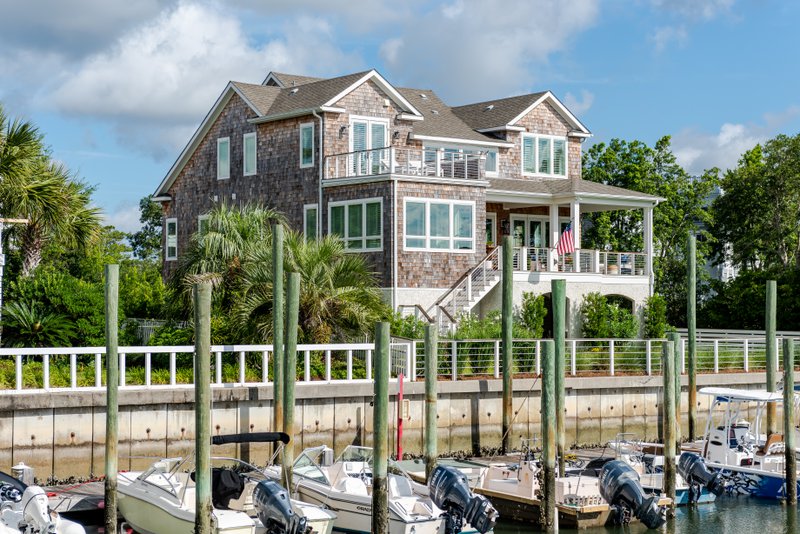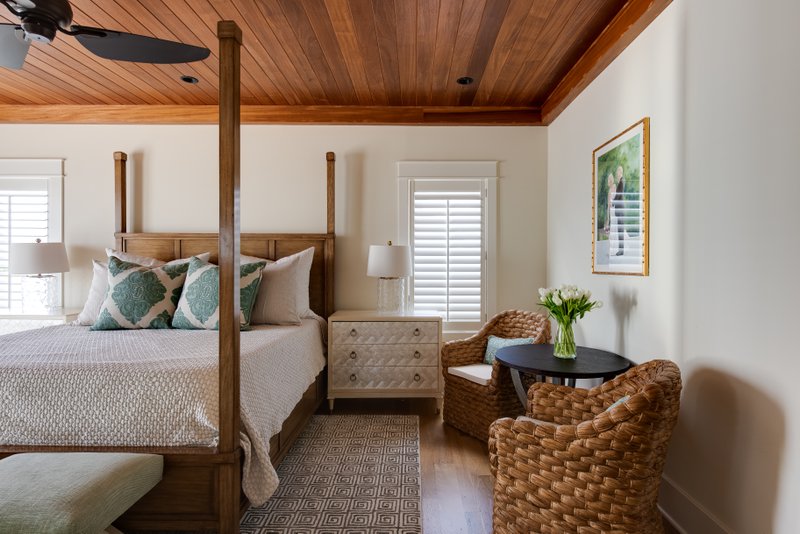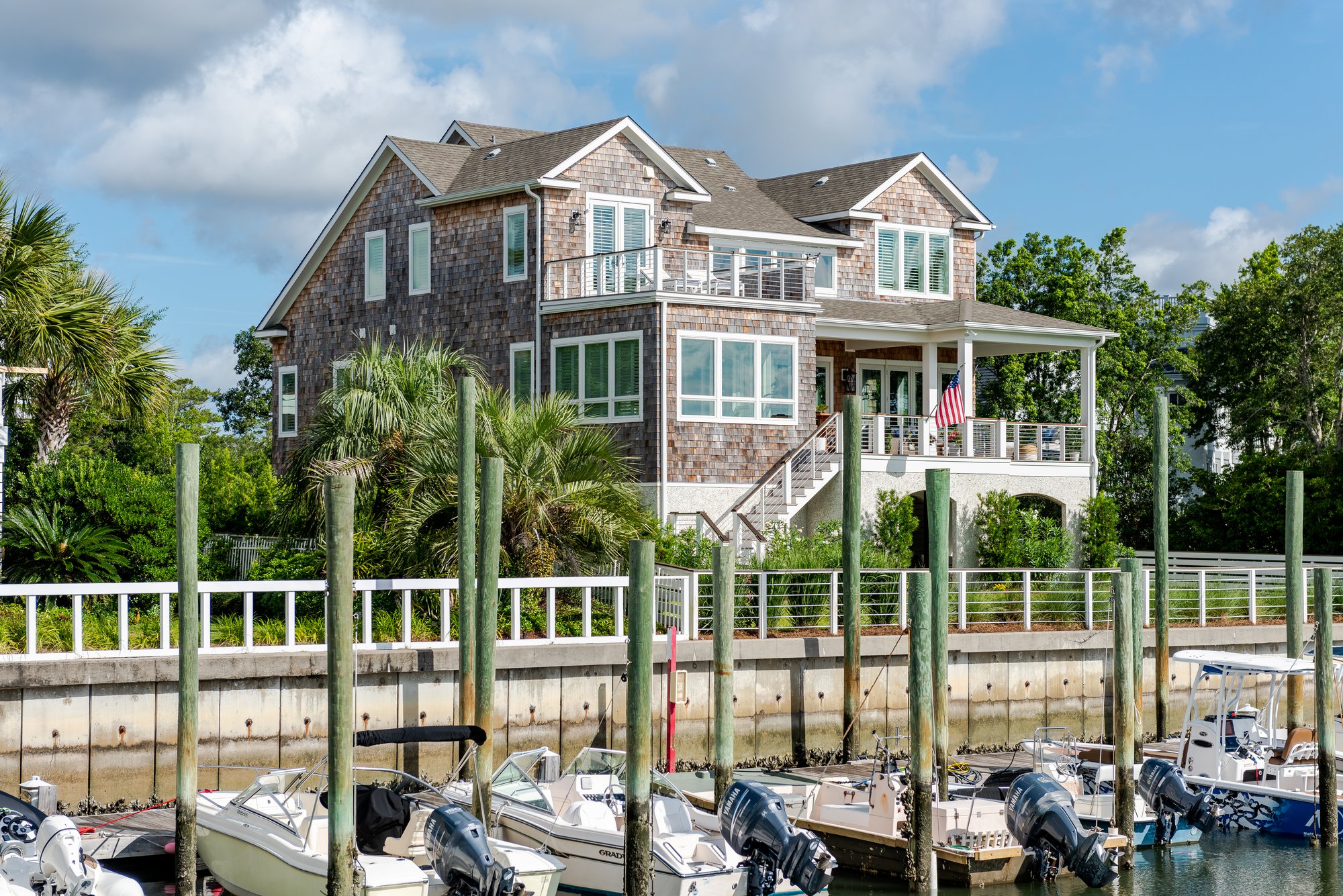Designing a coastal home involves more than capturing views of the water. It requires an understanding of how nature interacts with architecture and how the right choices in layout, color, and materials can keep a home safe, resilient, and beautiful for years. A coastal home builder knows that building elevated houses along the waterfront means addressing challenges like rising tides, high winds, and humidity while still achieving a welcoming and stylish design. The right approach blends practicality with creativity, ensuring these homes remain both durable and inviting.
Why Elevated Design Matters in Coastal Homes
Building a home on the waterfront often requires raising it above potential flood levels, not only to comply with safety codes but also to protect the long-term investment. Elevated foundations keep living spaces secure from storm surges and flooding, while also allowing for airflow that reduces moisture buildup underneath the home.
A coastal home builder designs with resilience in mind, incorporating features such as reinforced pilings, raised decks, and flexible layouts that adapt to the shoreline environment. These foundations serve a protective role but also open design opportunities for unique storage spaces, parking areas, or shaded outdoor retreats beneath the main floor.

Materials That Withstand Coastal Conditions
Choosing the right materials is one of the most important aspects of coastal home design. Salt, wind, and humidity can break down surfaces quickly if they are not suited to the environment. Durable siding options like fiber cement, composite shingles, or specially treated wood hold up far better than traditional materials.
For windows and doors, impact-resistant glass or storm protection (like Armor Screen) is a must, offering protection from both storms and heat while maintaining panoramic views. Metal roofing is another favorite of coastal home builders, as it provides both longevity and a sleek look. Flooring inside the home should prioritize moisture resistance, with options like porcelain tile, luxury vinyl, or treated hardwood being excellent choices. These selections not only protect the home but also enhance its aesthetic with natural textures that reflect the coastal setting.
Color Palettes Inspired by the Coastline
Designing a coastal home is not just about protection, it is also about atmosphere. Color plays a major role in connecting the home to its surroundings. Coastal palettes often draw from sand, sea, and sky, blending neutral tones with soft blues, greens, and grays. Lighter shades reflect natural light, keeping interiors bright and airy, while also helping to regulate indoor temperatures in warmer months.
Accent walls or cabinetry in deep navy, seafoam, or driftwood gray add visual depth and complement the environment outside. Exterior colors benefit from the same philosophy, often favoring whites, creams, and pastel hues that resist fading while creating timeless curb appeal.
Blending Indoor and Outdoor Living
One of the defining features of waterfront homes is their connection to nature. Elevated design often allows for sweeping views, and a coastal home builder maximizes this opportunity through thoughtful placement of windows, balconies, and outdoor spaces. Wraparound porches, rooftop decks, and screened-in verandas extend living areas outward, making the natural landscape part of daily life.
Sliding glass doors or folding walls create seamless transitions between indoor kitchens or living rooms and outdoor dining spaces, while shaded pergolas and covered patios provide shelter from the sun. These design elements ensure that families can enjoy the coastal lifestyle comfortably year-round.
Balancing Style and Function in a Coastal Home
The interior of a coastal home should reflect both comfort and practicality. Open floor plans are especially popular, as they encourage airflow and allow light to travel freely through the space. Durable finishes are essential. Think quartz countertops, stainless steel fixtures, and cabinetry sealed against moisture.
Coastal-inspired décor, like rattan furniture, linen upholstery, and woven textures, reinforces the natural setting without overwhelming the space. Functional storage is also key, especially in mudrooms or entryways designed to handle sandy shoes, wet towels, and beach gear. A coastal home builder will often recommend built-in solutions that maximize space while maintaining a clean, uncluttered look.

The Role of Storm Preparation in a Coastal Home
Living near the water requires acknowledging the potential for storms. While much of this preparation happens behind the scenes, it is critical to the safety and security of a home. Coastal home builders integrate features like storm shutters, reinforced roofs, and drainage planning into their designs.
Elevated construction adds a layer of natural defense, but smart planning ensures that the entire home is ready for strong winds or heavy rains. When combined with property management services, such as regular inspections and seasonal preparation, homeowners can feel confident their home will stand resilient through challenging weather.
Building a Coastal Home for Generations
A coastal home is often more than a residence; it is a gathering place for families across generations. Designing with this in mind means prioritizing both durability and comfort. Multi-functional spaces that adapt to changing needs, like guest suites or open living areas, provide flexibility for the future. Investing in strong foundations, reliable materials, and timeless design allows the home to last as both a functional structure and a cherished retreat.
Bringing It All Together
Designing an elevated waterfront home is a complex process that balances natural challenges with the desire for comfort and style. The expertise of a coastal home builder ensures that every detail, from the choice of siding to the placement of porches, contributes to a residence that is both resilient and welcoming.
At Konrady & Son Construction, we take pride in building coastal homes that protect families while celebrating their connection to the shoreline. Send us a message today.
Leave a Reply Cancel reply
site design
Monday - Friday
8:00 AM- 5:00 PM
435 Eastwood Rd
Wilmington, NC 28403
